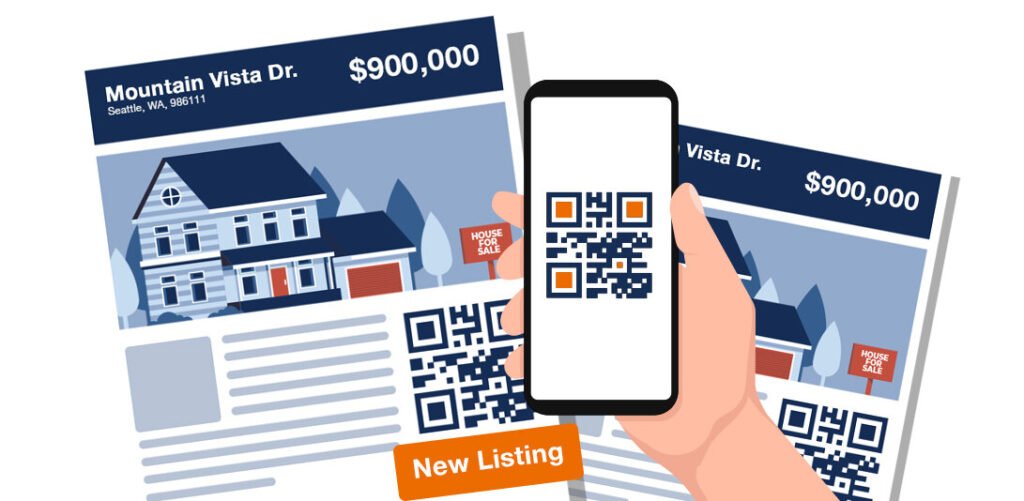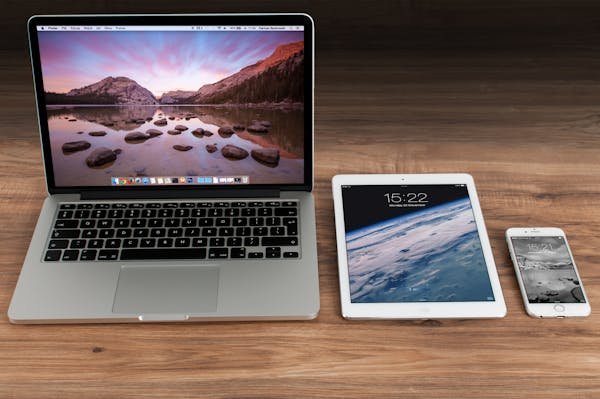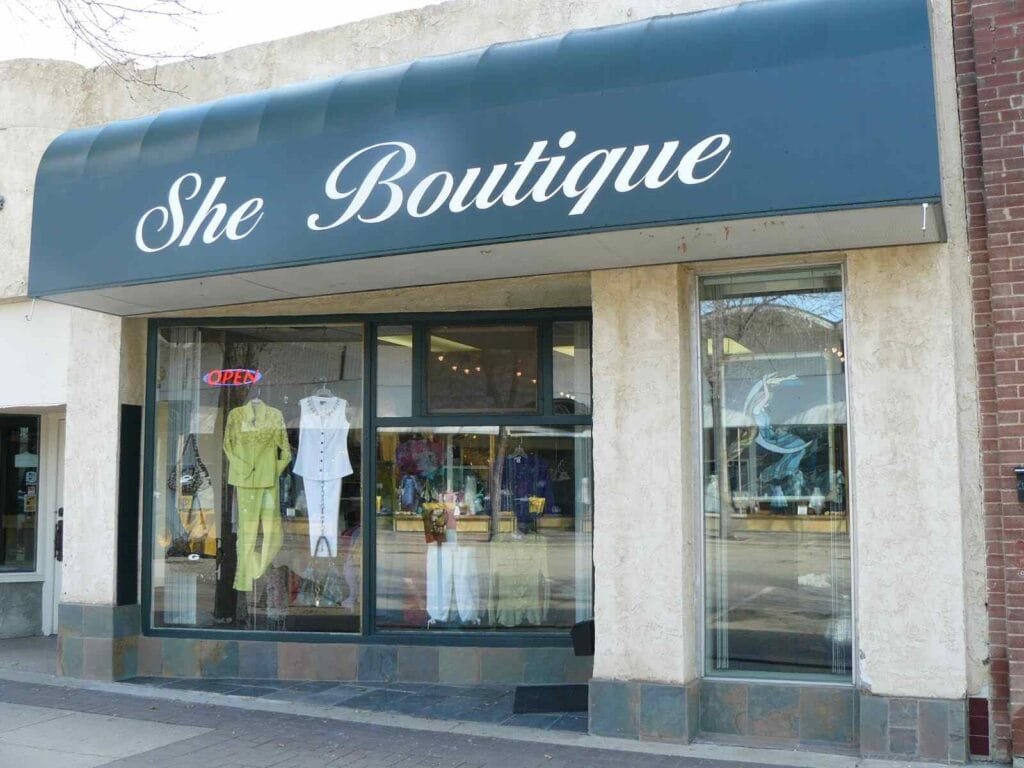QR codes have become a staple in modern marketing, offering a seamless way to connect the physical and digital worlds. Easy to scan with any smartphone, these codes can provide instant access to a wide array of information and interactive experiences. Whether you’re a startup looking to make a big impact or an established business wanting to enhance your marketing strategy, QR codes can be a game-changer. This article will explore innovative ways to use QR codes in marketing, providing tactical and actionable advice to help you leverage this powerful tool effectively.
Enhancing Print Media with QR Codes
Making Print Ads Interactive
Traditional print media, such as magazines and newspapers, can be brought to life with QR codes. By placing a QR code on a print ad, you can direct readers to a video, a special offer, or an online store.
This not only makes the ad more engaging but also provides a way to track its effectiveness.
Connecting Brochures to Digital Content
Brochures and flyers are common marketing tools, but they often get discarded after a quick glance. Adding QR codes to these materials can change that.
For example, a real estate brochure with a QR code can lead to virtual tours of properties. A restaurant flyer with a QR code can provide access to an online menu, customer reviews, or a reservation system.
Enhancing Business Cards
A business card with a QR code can offer much more than just contact information. Scanning the code can lead to a personal video message, a LinkedIn profile, or a portfolio of work.
This makes business cards not just a way to share contact details but also a tool to showcase your professional brand.
Boosting Engagement in Retail
Creating Personalized Shopping Experiences
In today’s competitive retail landscape, personalization is key to capturing and retaining customer interest. QR codes can play a crucial role in creating personalized shopping experiences.
Place QR codes in-store that customers can scan to receive tailored product recommendations based on their past purchases or preferences. For instance, a clothing store could use QR codes to suggest complementary accessories or similar styles.
This personalized approach not only enhances the shopping experience but also increases the likelihood of additional sales.
Enabling Interactive Product Displays
Interactive product displays can significantly boost customer engagement. By integrating QR codes, you can transform static displays into dynamic, informative experiences.
For example, a furniture store can have QR codes on display pieces that lead to virtual room planners, allowing customers to visualize how the furniture would look in their homes.
This interactivity can help customers make more informed decisions and feel more confident in their purchases.
Facilitating Omnichannel Integration
QR codes can bridge the gap between online and offline retail, facilitating a seamless omnichannel experience. Customers can scan QR codes in-store to access online reviews, check stock availability, or compare prices.
This integration can enhance customer convenience and satisfaction. For startup founders, ensuring your physical and digital channels are interconnected can lead to a more cohesive brand experience and higher customer retention rates.
Offering Exclusive In-Store Content
Providing exclusive content through QR codes can make the in-store shopping experience more rewarding. For instance, retailers can offer access to limited-time offers, behind-the-scenes videos, or special interviews with designers.
This content can be accessed only by scanning a QR code in-store, incentivizing visits and creating a sense of exclusivity and privilege.
Enhancing Customer Loyalty Programs
QR codes can revolutionize how loyalty programs are managed and accessed. Customers can scan a QR code to join your loyalty program instantly, check their points balance, or redeem rewards.
Additionally, QR codes can be used to deliver personalized offers based on a customer’s loyalty status. For example, a cafe could use QR codes to offer a free drink after a certain number of purchases, enhancing customer retention and satisfaction.
Streamlining the Checkout Process
Long checkout lines can deter customers and negatively impact their shopping experience. QR codes can streamline the checkout process by enabling self-checkout options.
Customers can scan items using their smartphones, pay through a mobile app, and avoid waiting in line. This efficient process can improve customer satisfaction and free up staff to assist with other tasks.
Facilitating Easy Product Returns
A smooth returns process is crucial for maintaining customer satisfaction. QR codes can simplify returns by providing customers with easy access to return policies, instructions, and online return portals.
Scanning a QR code can initiate the return process, generating a return label and tracking number. This convenience can enhance the overall shopping experience and encourage repeat business.
Engaging Customers with QR Code-Based Games
Gamification can be a powerful tool to increase customer engagement. Retailers can create QR code-based games that customers can play while shopping.
For example, a store might have a scavenger hunt where customers scan QR codes placed around the store to find clues and win prizes. This interactive and fun approach can increase foot traffic and keep customers in the store longer, boosting sales opportunities.
Implementing Geo-Targeted Marketing
Geo-targeted marketing uses location data to deliver personalized content to customers. QR codes can enhance this strategy by providing location-specific offers and information.
For example, a retailer could use QR codes to offer discounts that are only available at certain store locations or during specific times. This targeted approach can increase the relevance of your marketing efforts and drive more foot traffic to your stores.
Encouraging Social Media Engagement
Social media is a powerful tool for building brand awareness and engagement. QR codes can link directly to your brand’s social media profiles, encouraging customers to follow, share, and interact with your content.
For example, a QR code on a product display could lead to a special Instagram filter or a contest entry page. This integration can increase your social media reach and foster a stronger community around your brand.
Elevating Event Marketing
Streamlining Event Registration
Events, whether large conferences or small local meetups, can benefit from QR codes. Attendees can scan a QR code to register quickly, eliminating the need for lengthy forms and reducing wait times.
This improves the overall experience and increases the likelihood of attendees participating.
Enhancing Event Engagement
At the event itself, QR codes can be used to enhance engagement. Codes placed around the venue can lead to event schedules, speaker bios, or interactive maps.
They can also be used for live polls or Q&A sessions, allowing attendees to participate in real-time.
Post-Event Follow-Up
After the event, QR codes can help maintain engagement. Sending out thank-you notes with QR codes that lead to event highlight reels, surveys, or upcoming event information keeps the momentum going.
This can turn a one-time event into an ongoing conversation with your audience.
Transforming Packaging and Product Experience
Elevating Unboxing Experiences
The unboxing experience is a critical touchpoint that can leave a lasting impression on customers. QR codes can elevate this experience by adding an interactive and personalized element.
For example, a QR code included inside the packaging can lead to a welcome video from the founder, a thank you message, or a special discount for the next purchase. This not only makes the unboxing moment memorable but also fosters a personal connection with the brand, encouraging repeat purchases and word-of-mouth referrals.
Interactive Instruction Manuals
For products that require assembly or specific usage instructions, QR codes can be a game-changer. Instead of bulky paper manuals, a QR code on the product or packaging can direct customers to an online video tutorial, step-by-step interactive guide, or even a chatbot that can answer questions in real-time.
This approach not only reduces waste but also ensures that customers have access to up-to-date information, improving their overall experience with the product.
Linking to Digital Loyalty Programs
Integrating QR codes with digital loyalty programs can significantly enhance customer retention. By scanning a QR code on the product packaging, customers can instantly join the loyalty program, check their points, and access exclusive rewards.
This seamless integration makes it easy for customers to engage with the loyalty program, increasing their likelihood of returning to make additional purchases.
Showcasing Customer Testimonials and Reviews
Trust is a crucial factor in purchasing decisions. QR codes on packaging can link directly to customer testimonials and reviews, providing social proof and building trust.
For example, a QR code on a skincare product could lead to a page with before-and-after photos and reviews from satisfied customers. This transparent approach can boost credibility and influence potential buyers’ decisions.
Offering Customization Options
Brands can use QR codes to offer product customization options. For instance, a QR code on a shoe box could lead to an online tool where customers can personalize their shoes with different colors, materials, and designs.
This added level of customization can make the product more appealing and unique, enhancing customer satisfaction and loyalty.
Providing Recycling and Disposal Information
As sustainability becomes increasingly important to consumers, providing clear recycling and disposal instructions can be a significant value-add.
QR codes on product packaging can link to detailed information on how to properly recycle or dispose of the product. This not only demonstrates the brand’s commitment to environmental responsibility but also makes it easier for customers to make eco-friendly choices.
Connecting to Augmented Reality Experiences
Augmented Reality (AR) can transform the way customers interact with products.
QR codes on packaging can trigger AR experiences, such as a virtual try-on for fashion items, 3D visualizations of how a piece of furniture would look in their home, or interactive games related to the product.
These immersive experiences can make the product stand out, providing an innovative way to engage customers and drive sales.
Enabling Easy Reordering
For consumable products like supplements, beauty products, or household items, making reordering easy can boost customer retention.
A QR code on the packaging can lead to a quick reorder page, allowing customers to purchase the product again with minimal effort. This convenience can encourage repeat purchases and foster brand loyalty.
Providing Ingredient and Sourcing Transparency
Consumers are increasingly interested in knowing the origins of the products they buy. QR codes on packaging can link to detailed information about the ingredients or materials used, their sourcing, and the ethical practices involved in production.
This transparency can build trust and appeal to socially-conscious consumers who value sustainability and ethical sourcing.
Enhancing Brand Storytelling
Every brand has a story, and QR codes can be a powerful tool to share it. Scanning a QR code on the packaging can lead customers to a page that tells the brand’s story, including its mission, values, and the people behind the product.
This storytelling approach can create a deeper emotional connection with the brand, making customers feel more invested in their purchases.
Facilitating Customer Engagement
Engaging with customers post-purchase is crucial for building long-term relationships. QR codes on product packaging can link to social media pages, encouraging customers to follow, share their experiences, and participate in community discussions.
This can help create a sense of community around the brand, fostering loyalty and advocacy.
Driving Traffic to E-commerce Platforms
For products sold through various retail channels, QR codes can drive traffic to the brand’s e-commerce platform. A QR code on the packaging can offer an incentive, such as a discount or a free gift, for purchasing directly from the brand’s website.
This strategy not only increases online sales but also allows brands to capture valuable customer data and control the shopping experience.
Innovating in the Food and Beverage Industry
Providing Nutritional Information
Restaurants and food manufacturers can use QR codes to provide detailed nutritional information. A QR code on a menu or food package can lead to a webpage with calorie counts, ingredient lists, and allergy information.
This transparency can build trust and cater to health-conscious consumers.
Creating Unique Dining Experiences
In restaurants, QR codes can enhance the dining experience. Diners can scan a code to view the menu, place orders, or pay their bills, reducing the need for physical menus and contact with staff.
QR codes can also link to videos of the chef preparing dishes or stories about the origin of the ingredients, making the meal more engaging and informative.
Facilitating Customer Feedback
QR codes can make it easier for customers to provide feedback. A code on a receipt or at the table can direct diners to a quick online survey.
This real-time feedback can help businesses improve their services and address issues promptly.
Enhancing Travel and Tourism

Enriching Tourist Information
Tourist attractions can use QR codes to provide visitors with more information. For example, a QR code at a historical site can lead to a detailed history, photos, and videos.
This can make the visit more educational and engaging.
Streamlining Travel Processes
Travel companies can use QR codes to simplify processes. Boarding passes, hotel check-ins, and car rentals can all be streamlined with QR codes.
Travelers can scan a code to access their boarding pass, check into their hotel room without visiting the front desk, or unlock their rental car.
Promoting Local Businesses
QR codes can be used to promote local businesses and attractions. A QR code on a city map can lead tourists to hidden gems, local restaurants, and upcoming events.
This can enhance the visitor experience and boost local economies.
Innovating in Education and Training
Interactive Learning Materials
Educational institutions can use QR codes to make learning materials more interactive. Students can scan codes in textbooks to access additional resources, such as videos, quizzes, and interactive diagrams.
This can cater to different learning styles and make studying more engaging.
Facilitating Administrative Tasks
QR codes can simplify administrative tasks in educational settings. Students can scan codes to register for classes, check their schedules, or submit assignments.
This reduces paperwork and streamlines processes.
Enhancing Campus Tours
Colleges and universities can use QR codes to enhance campus tours. Visitors can scan codes at different locations to learn more about facilities, programs, and campus life.
This can provide a richer and more informative experience for prospective students and their families.
Boosting Real Estate Marketing
Virtual Property Tours
Real estate agents can use QR codes to offer virtual tours of properties. Prospective buyers can scan a code on a listing sign or brochure to access a virtual tour, photos, and detailed property information.
This can attract more interest and make the buying process more convenient.
Accessing Property Information
QR codes can provide instant access to property details. Scanning a code can lead to a webpage with information about the property’s features, neighborhood, and pricing. This makes it easier for potential buyers to gather information and make informed decisions.
Facilitating Open House Check-Ins
At open houses, QR codes can streamline the check-in process. Visitors can scan a code to register their attendance, providing the agent with their contact information for follow-up.
This can make the open house experience more organized and efficient.
Revolutionizing Healthcare Marketing
Simplifying Patient Information
Healthcare providers can use QR codes to simplify access to patient information. Patients can scan codes to view their medical records, appointment schedules, and prescription details.
This can improve patient engagement and make healthcare more accessible.
Providing Health Tips and Information
QR codes on health products can link to tips and information. For example, a code on a vitamin bottle can lead to articles about the benefits of the vitamin, dosage recommendations, and lifestyle tips.
This adds value to the product and helps educate consumers.
Enhancing Medical Training
Medical training programs can use QR codes to enhance learning. Students can scan codes to access video demonstrations, case studies, and interactive simulations.
This can make training more practical and engaging.
Engaging in Creative Campaigns
Scavenger Hunts
Brands can create scavenger hunts using QR codes to engage customers in a fun and interactive way. Participants scan codes at different locations to receive clues or complete challenges, with the final prize being a discount or special offer.
This can drive foot traffic to various locations and create a memorable brand experience.
Augmented Reality Experiences
QR codes can be used to trigger augmented reality (AR) experiences. Scanning a code can bring a product to life with 3D animations or interactive features.
This can be particularly effective in retail environments, making the shopping experience more immersive and exciting.
Interactive Billboards
Outdoor advertising can be transformed with QR codes. An interactive billboard with a QR code can lead to a video, a game, or a contest. This can capture the attention of passersby and encourage them to engage with the brand on a deeper level.
Boosting Hospitality Industry Engagement
Enhancing Guest Experiences
Hotels and resorts can use QR codes to enhance the guest experience from check-in to check-out.
Placing QR codes in guest rooms can provide instant access to information about hotel amenities, room service menus, and local attractions. Guests can scan the code to order room service, book spa treatments, or find recommendations for nearby restaurants and activities.
Streamlining Check-In and Check-Out
QR codes can simplify the check-in and check-out processes, making them faster and more efficient. Guests can scan a QR code upon arrival to complete their check-in digitally, reducing wait times and minimizing contact with front desk staff.
Similarly, a QR code in the room can be scanned to initiate a quick and seamless check-out process.
Promoting Loyalty Programs
Hotels can use QR codes to promote their loyalty programs. Guests can scan a code to sign up for the program, check their points balance, and access exclusive offers.
This not only drives engagement with the loyalty program but also encourages repeat visits.
Innovating in the Automotive Industry
Enhancing Showroom Visits
Car dealerships can use QR codes to enhance showroom visits. Placing QR codes on vehicles can provide prospective buyers with detailed information about each model, including specifications, pricing, and financing options.
This allows customers to access information quickly and conveniently, improving their showroom experience.
Facilitating Test Drives
QR codes can streamline the process of scheduling test drives. Customers can scan a code on a dealership’s website or in the showroom to book a test drive at their convenience.
This simplifies the booking process and increases the likelihood of potential buyers taking the next step.
Providing Maintenance Information
Automotive companies can use QR codes to provide maintenance information to vehicle owners. A QR code on a vehicle’s dashboard or in the owner’s manual can link to maintenance schedules, instructional videos, and service booking options.
This helps owners keep their vehicles in top condition and builds brand loyalty.
Enhancing Entertainment and Media Engagement

Interactive Movie Posters
Movie theaters and film studios can use QR codes on movie posters to engage potential viewers. Scanning the code can lead to trailers, behind-the-scenes content, and exclusive interviews with the cast and crew.
This generates excitement and provides additional content to entice viewers to watch the film.
Enriching Music Album Releases
Musicians and record labels can use QR codes to enhance album releases. A QR code on the album cover can link to bonus tracks, music videos, or a digital booklet with lyrics and artist insights.
This adds value to the physical album and creates a richer experience for fans.
Enhancing Magazine Content
Magazines can use QR codes to supplement their print content with digital extras. A QR code next to an article can lead to video interviews, photo galleries, or interactive features.
This creates a more immersive reading experience and bridges the gap between print and digital media.
Improving Public Transportation
Simplifying Ticket Purchases
Public transportation systems can use QR codes to simplify ticket purchases. Passengers can scan a code at bus stops or train stations to buy tickets through a mobile app, reducing the need for physical ticket machines and cash transactions.
This makes public transport more convenient and accessible.
Providing Real-Time Updates
QR codes can be used to provide real-time updates on schedules and routes. Passengers can scan a code to see the latest arrival times, track their bus or train, and receive alerts about delays or disruptions.
This improves the overall travel experience by keeping passengers informed.
Promoting Local Attractions
QR codes on public transportation vehicles can promote local attractions and events. Passengers can scan codes to learn about nearby tourist spots, upcoming festivals, and special offers at local businesses.
This can enhance their travel experience and encourage exploration of the area.
Elevating Non-Profit and Charity Campaigns
Facilitating Donations
Non-profits and charities can use QR codes to make it easier for people to donate. A QR code on fundraising materials can lead to a secure online donation page, simplifying the process for donors.
This can increase the number of donations and support for the cause.
Raising Awareness
QR codes can be used to raise awareness about important issues. For example, a QR code on a campaign poster can link to detailed information about the cause, personal stories, and ways to get involved.
This educates the public and encourages them to take action.
Enhancing Event Participation
Charities can use QR codes to enhance participation in fundraising events. Participants can scan codes to register, access event details, and share their involvement on social media.
This increases engagement and helps spread the word about the event.
Streamlining Professional Services
Simplifying Appointment Booking
Professional service providers, such as doctors, lawyers, and consultants, can use QR codes to simplify appointment booking.
Clients can scan a code on a business card or website to access an online booking system, making it easy to schedule appointments without the need for phone calls or emails.
Providing Access to Resources
QR codes can provide clients with easy access to resources and information. For example, a law firm can include a QR code on their brochure that links to legal guides and articles.
A healthcare provider can use QR codes to share wellness tips and treatment plans with patients.
Enhancing Networking Opportunities
At professional events and conferences, QR codes can be used to enhance networking opportunities. Attendees can scan codes to exchange contact information, access digital business cards, and connect on social media.
This streamlines the networking process and makes it easier to follow up after the event.
Revolutionizing E-Commerce
Enhancing Product Packaging
E-commerce businesses can use QR codes to enhance product packaging. A QR code on the package can link to unboxing videos, product tutorials, and customer reviews.
This adds value to the purchase and provides customers with additional information about their product.
Simplifying Returns and Exchanges
QR codes can simplify the returns and exchanges process for online purchases. Customers can scan a code on their receipt or packaging to initiate a return, print a shipping label, or track their return status.
This improves the customer experience and encourages repeat business.
Promoting Special Offers
E-commerce stores can use QR codes to promote special offers and discounts. A QR code on a flyer or social media post can lead to a limited-time sale or a personalized discount code.
This drives traffic to the online store and boosts sales.
Transforming Public Spaces and Outdoor Advertising
Interactive Billboards
Outdoor advertising can be revitalized with the integration of QR codes. Billboards in high-traffic areas can include QR codes that lead to promotional videos, interactive games, or exclusive online offers.
This interactive element captures attention and encourages passersby to engage with the brand in a more meaningful way.
Smart City Initiatives
Cities can integrate QR codes into public spaces to enhance the visitor experience. For example, QR codes at bus stops can provide real-time transit information, while codes in parks can link to historical facts or audio guides.
This makes city navigation and exploration more convenient and informative.
Wayfinding Solutions
QR codes can assist in wayfinding within large public venues like shopping malls, airports, and stadiums. Scanning a QR code on a directory can provide visitors with step-by-step directions to their desired location, store details, and special promotions.
This improves the visitor experience and can drive foot traffic to specific areas.
Elevating Customer Service and Support
Instant Access to Help
Customer service can be significantly enhanced with QR codes. Product packaging or instruction manuals with QR codes can link directly to customer service chatbots, video tutorials, or FAQ pages.
This provides customers with instant support without the need to search for help.
Simplifying Warranty and Registration
Products that require registration for warranty purposes can include QR codes to streamline the process. Scanning the code can direct customers to an online registration form, making it quick and easy to complete.
This not only improves customer satisfaction but also helps companies maintain accurate records.
Enhancing User Manuals
Complex products often come with extensive user manuals that can be daunting. QR codes can lead users to specific sections of an online manual, video demonstrations, or troubleshooting guides, making it easier to find the needed information.
This can reduce frustration and enhance the user experience.
Innovating in the Fashion Industry
Interactive Fashion Shows
Fashion brands can use QR codes to create interactive fashion show experiences. Attendees can scan codes to access details about the outfits being showcased, purchase items directly from the runway, or view behind-the-scenes content.
This bridges the gap between the physical and digital event, offering a richer experience.
Personalized Shopping Experiences
In retail stores, QR codes can enhance the shopping experience by providing personalized recommendations. For example, a code on a clothing rack can link to styling tips or suggest complementary items. This can help customers make more informed purchasing decisions and improve their overall shopping experience.
Sustainable Fashion Initiatives
Brands focused on sustainability can use QR codes to provide transparency about their products. Scanning a QR code on a garment can reveal information about the materials used, the manufacturing process, and the brand’s sustainability practices.
This builds trust with environmentally-conscious consumers and supports ethical marketing efforts.
Enriching the Real Estate Experience

Virtual Tours and 3D Walkthroughs
Real estate listings can be enhanced with QR codes that link to virtual tours and 3D walkthroughs of properties. Potential buyers or renters can scan the code from a flyer or yard sign to explore the property in detail from their smartphones.
This provides a convenient and immersive way to view properties.
Accessing Comprehensive Property Information
QR codes can provide comprehensive information about properties. Scanning a code can lead to detailed descriptions, floor plans, neighborhood data, and agent contact information.
This allows prospective buyers to gather all the information they need without visiting multiple websites.
Facilitating Open House Check-Ins
During open houses, QR codes can streamline the check-in process and capture visitor information. Attendees can scan a code to register their attendance and receive digital brochures.
This makes the open house experience more organized and provides agents with valuable leads for follow-up.
Innovating in Fitness and Wellness
Enhancing Gym Experiences
Gyms and fitness centers can use QR codes to enhance member experiences. Codes on gym equipment can link to instructional videos, workout routines, and tracking apps.
This helps members use the equipment correctly and get the most out of their workouts.
Promoting Health Programs
Wellness programs can be promoted through QR codes. For instance, a code on a flyer can link to a registration page for a new fitness class, a guided meditation session, or a nutrition workshop.
This makes it easy for people to join and engage with wellness initiatives.
Facilitating Virtual Fitness Training
Personal trainers can use QR codes to offer virtual training sessions. A QR code on a business card or social media post can lead to a booking page for online coaching, workout videos, or personalized fitness plans.
This expands their reach and provides clients with flexible training options.
Enhancing Cultural and Recreational Activities
Interactive Museum Exhibits
Museums and galleries can use QR codes to make exhibits more interactive and informative. Visitors can scan codes to access additional information about artworks, artist biographies, and audio guides.
This enriches the visitor experience and makes learning more engaging.
Engaging Sports Fans
Sports venues can use QR codes to engage fans during events. Codes placed around the stadium can link to live stats, player profiles, and interactive games.
This keeps fans engaged and informed throughout the event.
Promoting Outdoor Activities
Parks and recreational areas can use QR codes to promote outdoor activities. Scanning a code on a trailhead can provide information about the trail, safety tips, and nearby attractions.
This encourages more people to explore and enjoy outdoor spaces.
Wrapping it up
Integrating QR codes into your marketing strategy offers endless possibilities to enhance customer engagement, streamline processes, and elevate product experiences. By making print ads interactive, boosting retail engagement, transforming packaging, and connecting physical products to digital content, QR codes can bridge the gap between the physical and digital worlds.
For startup founders, leveraging these innovative applications can create memorable customer experiences, drive sales, and set your brand apart in a competitive market. Embrace QR codes to unlock new opportunities and connect with your audience in meaningful and impactful ways.
READ NEXT:
- Content Ideas for Your Marketing Blog
- How to Start the New Year with Fresh Marketing Strategies
- Effective Marketing Strategies for Garage Door Companies
- Marketing Strategies to Grow Your Orthodontic Practice
- How to Attract More Customers to Your Bar and Restaurant






















Comments are closed.